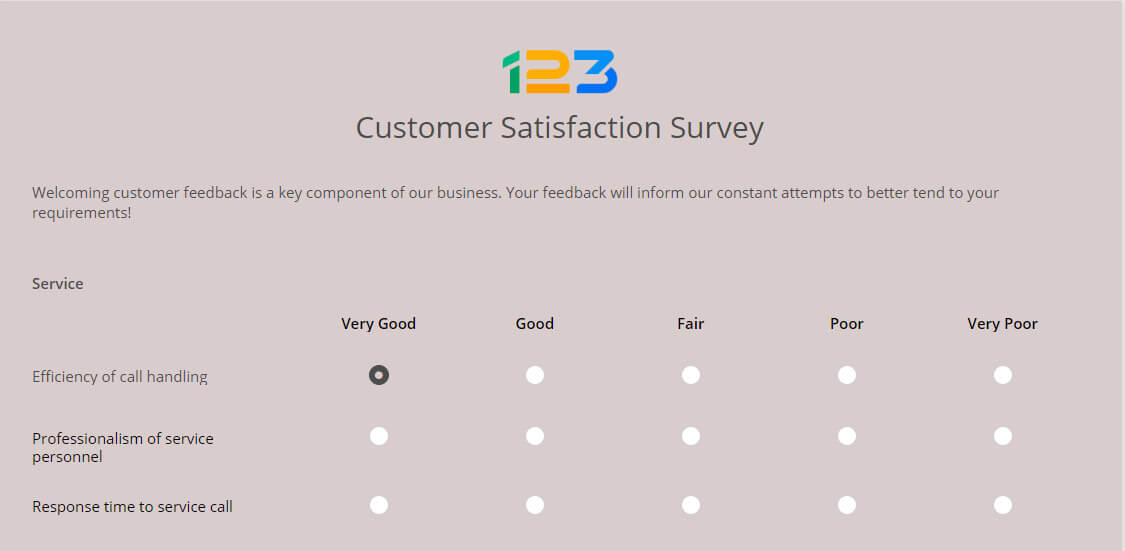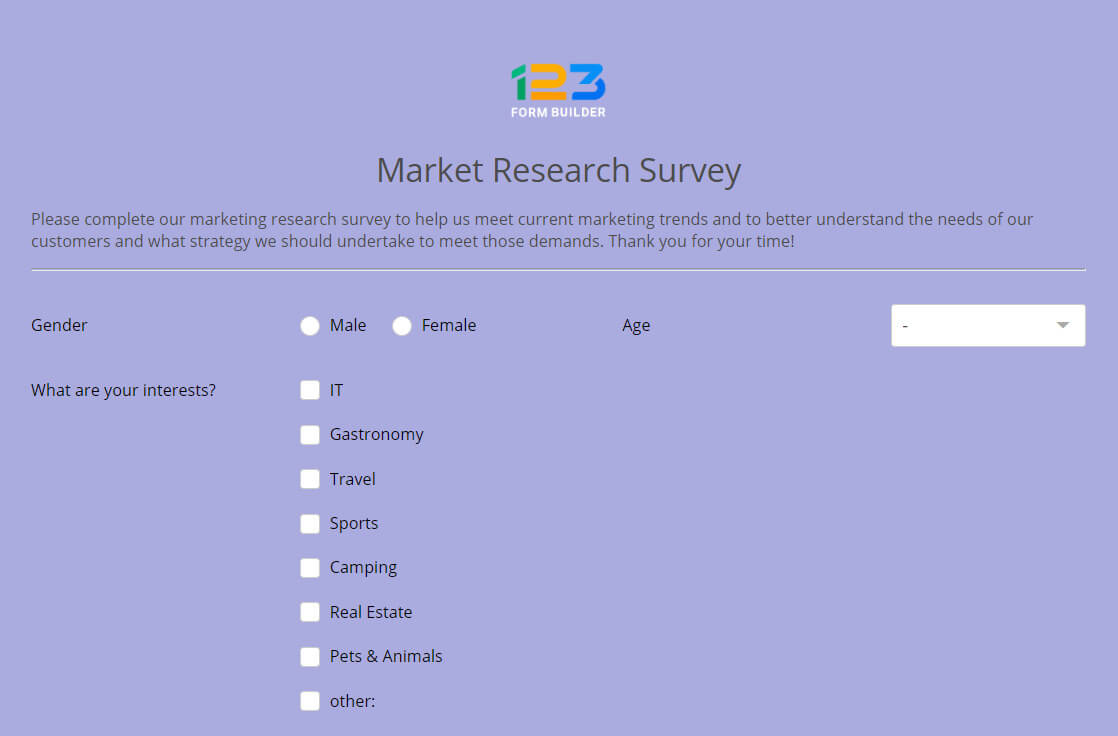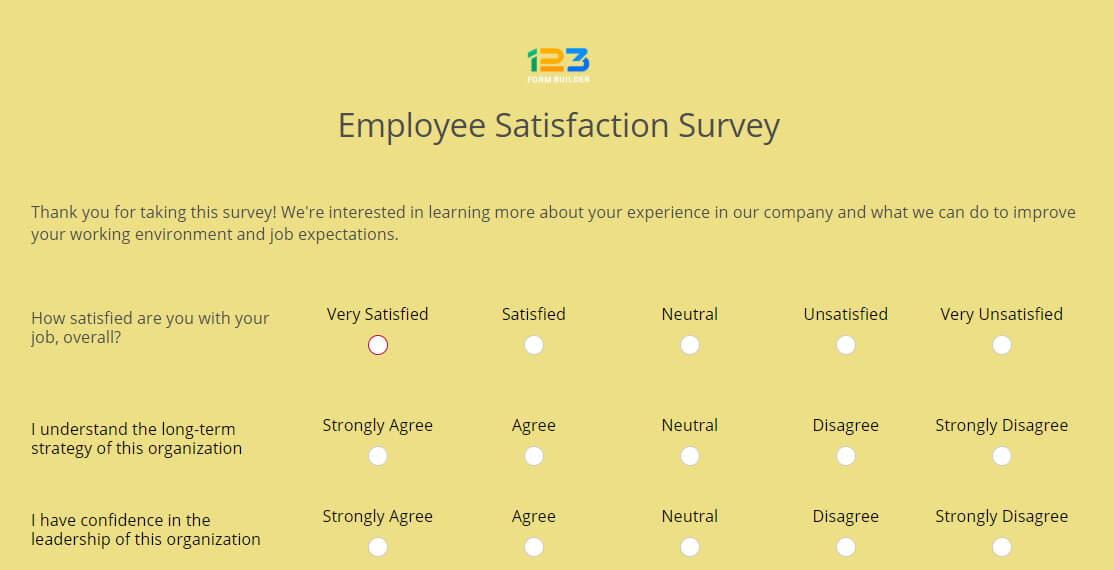Survey vs Questionnaire: What is the Difference?
If you’re reading this question and thinking, “I’m not sure”, relax, you’re not the only one confused between what’s a survey what’s a questionnaire.
The short answer …
A questionnaire is a tool that you use to collect information from a specific group of people. A survey, on the other hand, is part of a study that includes several tools for collecting data such as questionnaires, face-to-face interviews, and phone calls.
So, in short, a questionnaire is part of a survey. For the longer version, keep on reading.
What is a Survey?
If you google the phrase “what is a survey”, you’ll find numerous definitions that repeat the word “examine”. To do a survey means to examine something and reveal valuable insights.
A survey is a complex process that involves collecting data and managing it through one or several methods to discover something. You can use a survey to test a hypothesis, generate feedback, or discover trends.
A survey is not a thing, but a process of things.
Examples of surveys
1. Customer Satisfaction Survey

Whatever business you are running, customers come first if you want to succeed. By asking your customers to rate your products or services, you’ll get a better understanding of how to develop your business further.
2. Market Research Survey

A market research survey can be used to gather information about customers and target markets. It’s used by companies to adjust their business strategies. It uncovers important information on the market that the business is targeting.
3. Employee Satisfaction Survey

Happy employees equal happy customers which means a profitable business. But knowing how employees feel towards your leadership, what they think of their benefits, and everything else at the office requires a thorough study.
Survey methods
There are several methods that you can use to run a survey. The most common ones are:
- Phone
- Face-to-face interview
- Online forms
What is a Questionnaire?
A survey questionnaire is a research tool consisting of questions that respondents answer during a survey. It’s basically a form with a series of questions that help gather information for your research. The questions can be open(answers are subjective) or closed (answers are more objective).
But questionnaires are used for lead generation as well. Take for example a graphic design company that needs to create a brief for each contract. It would use a questionnaire that the customers will fill in with all the necessary information. This way, the designers can start working on the project right away, without having to make too many changes to the contract.
In a world filled with big, difficult-to-handle data, questionnaires help structure it into manageable chunks.
Confusion between Surveys and Questionnaires
You will often hear the words “survey” or “questionnaire” used to describe the same thing. Here are some similarities that could be behind this confusion:
1. Surveys and Questionnaires are both used in research
Whenever you use a questionnaire, you’re planning to use the data you have collected, in one way or another. This leads to reporting the results in tables, charts, heatmaps, etc. So, there’s a process involved where you take the responses and aggregate them into something.
Even if you use only phone calls or live interviews to conduct your survey, you would still organize the answers in some way.
When it comes to running a survey or sharing a questionnaire, the purpose is the same: collecting data. And the output can often look very similar too.
2. Surveys and Questionnaires collect qualitative and quantitative data
Whichever one you’re running, surveys and questionnaires are not distinguished by the kind of data they give you.
What is Quantitative Data?
Quantitative data consists of numerical or any data set that can be statistically analyzed.
Examples of quantitative data:
- The number of red marbles in a bowl
- The number of people aged 25 in a group
- The average amount of money a plumber makes every month in New York
What is Qualitative Data?
Qualitative data is harder to process in statistics but is more accurate.
Examples of qualitative data:
- The colors of all marbles in the bowl
- The professions of all people within a group aged 25
- Areas of New York where plumbers are mostly needed each month
When it comes to collecting data through a survey, you’re faced with the question: ‘what method should I use to get the best and most accurate insights?’
If “questionnaire” is your answer, then you’ll be asking yourself: ‘should I use just open-end questions, closed-ended questions, or both?’. But, remember. Open-ended questions will collect qualitative data and close-ended questions, quantitative data.
Both questionnaires and surveys are useless unless you figure out which types of data best suits your needs.
And yes, quantitative data can be just as good as qualitative data. Especially for small research such as customer feedback gathered at the exit of a clothing store.
3. Surveys and Questionnaires can generate noisy data
Answers are only as good as the questions themselves. Many philosophical mathematicians will tell you, it’s harder to ask than to answer. It’s the same in any kind of research you are going to conduct. If you cannot ask the right questions, the answers will not be as valuable.
How many times did you run a survey just to end up not knowing what to do with the data or worse, not having the right data?
Noisy data cannot be avoided 100%. Respondents will often rush through your research just to get it over with and move on with their lives. Hence, some of their inputs will not be accurate and sincere.
In a survey, some methods create noisier data than others. Take for example phone calls that do not find respondents always in the same environment: some are stuck in traffic, others have to catch a plane, and so on.
A face-to-face interview could prove the best method, depending on how it’s set up. If it’s by asking people questions on the street, then probably not the best set up. If it’s by inviting them to your office for the interview, then likely that’s better. And that’s because the respondents are giving away their time freely for your survey by accepting the invitation rather than saying stuff to get rid of you so they can go back to their shopping.
Questionnaires are the second best option after interviews. But be careful.
If you ask the wrong questions, or if you ask just too many questions in a questionnaire, you’ll end up with a lot of work filtering and analyzing what little good data you do have.
Tips for running a survey
1. Define your target audience
There’s an important factor that you need to take into consideration when running a survey: Who is your target audience?
Before starting a survey, ask yourself:
- Who are my respondents?
- Where are my respondents located?
- How can I reach them?
2. Target closed groups instead of a general audience
A closed group can consist of members of an organization (e.g. employees) or people within a specific community.
Targeting a closed group is much easier than targeting the general population. If you want to target several groups, run several surveys. For example, people between the ages of 16-25 may spend more time online than those above 60. This means you should use different approaches, and maybe even tools, to target each group and gain successful results.
If you’re targeting a multilingual community, you should conduct your survey in the different languages that your target audience is using.
And don’t neglect your mobile consumers. More than 50% of the global Internet traffic is done on mobile, all the more reason to optimize your surveys for mobile devices.
3. Choose the tool that works best for you
Once you know your target audience, select the tools that you will use: phone calls, emails, live interviews, or questionnaires.
In recent times, a lot of people have moved their activities indoors and online. This means you should adapt your research to the trends. You can use an online survey maker to build your questionnaires, share them with your target audience online, and aggregate the responses into custom reports.
Always choose the tool based on the audience you are targeting. Never the other way around.
4. Be transparent and express confidence
Make it clear to your audience what your survey is for and how you will use the information your respondents are providing, especially if you’re processing personal data. If you’re running the survey in Europe, make sure you are GDPR compliant.
By being more transparent you will increase the number of responses for your survey.
Apply These Tips With Our Survey Maker
Tips for writing your questionnaire
The golden rule of questionnaires is that NO-ONE will spend more than 10 minutes answering your questions. There are cases when it can go above this time limit but we advise you to treat this rule as unbreakable as much as you can.
Before writing your questionnaire, keep in mind the following:
- Add simple questions, so the answers will be straightforward
- Include at least one important question in the first half of your questionnaire
- Use more closed questions
- Don’t ask too many questions
- Don’t ask personal questions unless the answers are needed for your survey
- Be transparent about the purpose of your survey
- Be relevant
The more questions you add to your questionnaire, the higher the chances people will not answer all of them. You must stick to the essentials and offer the best experience.
Create Your Survey Questionnaire Now
Got it now?
I hope this article helped you clear up any confusion and you now feel comfortable knowing the difference between a questionnaire and a survey. To sum it up, a questionnaire is a tool for collecting data, while a survey is a process in which you collect and study the data you have collected. You can use several tools within a survey, a questionnaire being an example of one of them.
By the way! If you’re looking to create an online survey or questionnaire without coding a thing, give 123FormBuilder a try. You’ll have it up and running in no time.
Surveys versus questionnaires – Frequently Asked Questions
What is the difference between a survey and a questionnaire?
A survey is a research methodology that includes one or several tools for collecting qualitative and quantitative data. A questionnaire is merely one of the many tools you can use to collect data like phone calls and interviews. Most surveys include a questionnaire but not all questionnaires are part of a survey. For example, you can use a questionnaire to collect customer order information and other requirements that help you do business with your clients as efficiently as possible.
What are the similarities between surveys and questionnaires?
Both surveys and questionnaires include a series of questions that help researchers stay on point with their study and generate accurate insights from their respondents’ answers.
Load more...